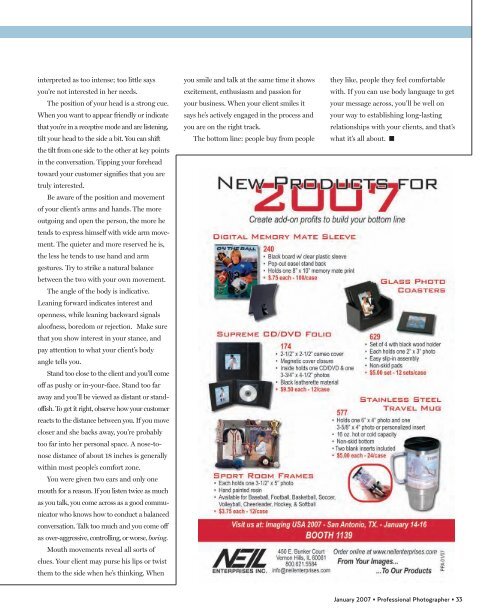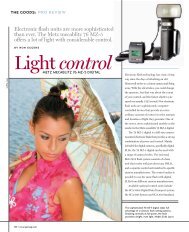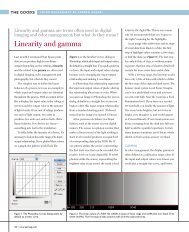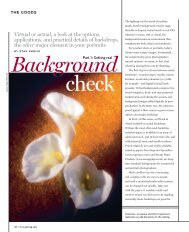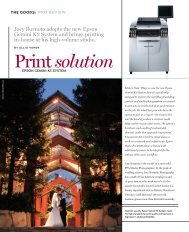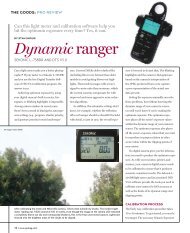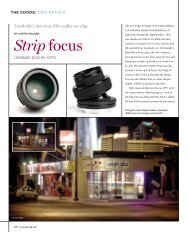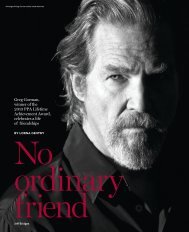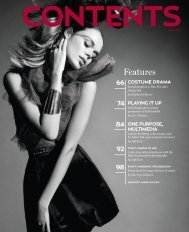january 2007 - Professional Photographer Magazine
january 2007 - Professional Photographer Magazine
january 2007 - Professional Photographer Magazine
Create successful ePaper yourself
Turn your PDF publications into a flip-book with our unique Google optimized e-Paper software.
interpreted as too intense; too little says<br />
you’re not interested in her needs.<br />
The position of your head is a strong cue.<br />
When you want to appear friendly or indicate<br />
that you’re in a receptive mode and are listening,<br />
tilt your head to the side a bit. You can shift<br />
the tilt from one side to the other at key points<br />
in the conversation. Tipping your forehead<br />
toward your customer signifies that you are<br />
truly interested.<br />
Be aware of the position and movement<br />
of your client’s arms and hands. The more<br />
outgoing and open the person, the more he<br />
tends to express himself with wide arm movement.<br />
The quieter and more reserved he is,<br />
the less he tends to use hand and arm<br />
gestures. Try to strike a natural balance<br />
between the two with your own movement.<br />
The angle of the body is indicative.<br />
Leaning forward indicates interest and<br />
openness, while leaning backward signals<br />
aloofness, boredom or rejection. Make sure<br />
that you show interest in your stance, and<br />
pay attention to what your client’s body<br />
angle tells you.<br />
Stand too close to the client and you’ll come<br />
off as pushy or in-your-face. Stand too far<br />
away and you’ll be viewed as distant or standoffish.<br />
To get it right, observe how your customer<br />
reacts to the distance between you. If you move<br />
closer and she backs away, you’re probably<br />
too far into her personal space. A nose-tonose<br />
distance of about 18 inches is generally<br />
within most people’s comfort zone.<br />
You were given two ears and only one<br />
mouth for a reason. If you listen twice as much<br />
as you talk, you come across as a good communicator<br />
who knows how to conduct a balanced<br />
conversation. Talk too much and you come off<br />
as over-aggressive, controlling, or worse, boring.<br />
Mouth movements reveal all sorts of<br />
clues. Your client may purse his lips or twist<br />
them to the side when he’s thinking. When<br />
you smile and talk at the same time it shows<br />
excitement, enthusiasm and passion for<br />
your business. When your client smiles it<br />
says he’s actively engaged in the process and<br />
you are on the right track.<br />
The bottom line: people buy from people<br />
they like, people they feel comfortable<br />
with. If you can use body language to get<br />
your message across, you’ll be well on<br />
your way to establishing long-lasting<br />
relationships with your clients, and that’s<br />
what it’s all about. ■<br />
January <strong>2007</strong> • <strong>Professional</strong> <strong>Photographer</strong> • 33


